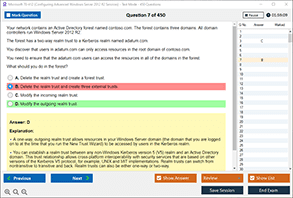Introduction
In the world of networking, where seamless communication and optimal performance are paramount, technologies that enhance reliability, speed, and fault tolerance are vital. Among these technologies, EtherChannel stands out as one of the most impactful innovations for network engineers and architects. Whether you are an aspiring network administrator preparing for a Cisco exam or a seasoned professional working to optimize your organization’s infrastructure, understanding EtherChannel is crucial.
At DumpsArena, we are committed to helping networking professionals and certification aspirants deepen their understanding of key networking concepts. This article will walk you through the intricate yet fascinating details of EtherChannel, its operational principles, and most importantly, the advantages it brings to modern networking environments. Specifically, we will explore the two major advantages that make EtherChannel a preferred solution in enterprise-grade networks. Additionally, at the end of the blog, you will find multiple-choice questions (MCQs) with answers to help reinforce your knowledge, just as we provide in our premium dumps and exam guides.
Understanding EtherChannel: An Overview
Before diving into its advantages, let’s understand what EtherChannel is. Developed by Cisco, EtherChannel is a port link aggregation technology. It enables multiple physical Ethernet links to be combined into one logical link. This aggregation allows traffic to be distributed across multiple links, enhancing both performance and redundancy without changing the configuration of the network layer.
For instance, if a network administrator configures four 1 Gbps links as a single EtherChannel, the resulting logical link can carry up to 4 Gbps of bandwidth. The real power of EtherChannel lies in its ability to distribute traffic intelligently and provide fault tolerance if one or more links fail.
This capability is especially useful in scenarios where high throughput and constant uptime are non-negotiable—such as in data centers, service provider networks, or campus LANs.
EtherChannel Operations: Behind the Scenes
EtherChannel operates using two main protocols—Port Aggregation Protocol (PAgP) and Link Aggregation Control Protocol (LACP). PAgP is Cisco proprietary, while LACP is part of the IEEE 802.3ad standard, making it interoperable with devices from different vendors.
Both protocols function by negotiating with other devices to form a channel, checking for compatibility and link configurations. Once the physical ports are bundled, they are treated as a single interface by routing and switching protocols. This means Spanning Tree Protocol (STP) sees the bundle as a single port, which prevents loops while retaining the benefits of redundancy and speed.
Now that we understand how EtherChannel works, let’s dive deeper into the two major advantages that set it apart as a networking solution.
Advantage 1: Increased Bandwidth
One of the most compelling advantages of EtherChannel is bandwidth aggregation. In traditional network configurations, a single physical link limits throughput. When multiple links are required, they typically operate independently, which can be inefficient and prone to bottlenecks.
EtherChannel solves this limitation by combining several physical links into a single logical link. This approach significantly boosts the available bandwidth between switches, servers, or routers. For instance, combining eight 1 Gbps Ethernet links through EtherChannel provides an aggregated bandwidth of up to 8 Gbps. This ensures high-speed data transfer, reduces latency, and improves the overall efficiency of the network.
This increased bandwidth is particularly useful for applications that demand heavy data transfers—such as video conferencing, virtualization environments, cloud storage solutions, and large-scale data analytics. Enterprises can ensure smooth data flow without performance degradation, even under heavy network loads.
At DumpsArena, our CCNA and CCNP practice questions often test your understanding of how bandwidth is calculated with EtherChannel. Grasping this concept not only helps you pass the exam but also equips you to build high-performance networks.
Advantage 2: Redundancy and Fault Tolerance
Another key advantage of EtherChannel is its inherent redundancy and fault tolerance. In traditional setups, if a single link fails, the entire connection can go down—resulting in service interruptions or degraded network performance.
With EtherChannel, however, the risk is mitigated. Since multiple physical links are bundled together, the failure of one link does not sever the entire connection. The logical interface remains up, and traffic is rerouted through the remaining links in the bundle. This ensures uninterrupted service and provides a built-in layer of resilience, essential for business-critical environments.
Moreover, because STP treats the EtherChannel as a single link, it prevents blocking additional links that would otherwise remain unused for loop prevention. This increases link utilization without compromising network safety.
Imagine an enterprise network with high availability requirements—such as a hospital’s IT infrastructure or a banking system backend. EtherChannel provides the high availability these institutions demand without complex configurations or expensive hardware.
Enhanced Load Balancing Capabilities
EtherChannel also supports intelligent load balancing, which distributes traffic across the available physical links using various criteria like MAC addresses, IP addresses, or TCP/UDP ports. This ensures that no single link is overwhelmed with data, improving traffic flow and efficiency.
Administrators can choose the most suitable load-balancing method based on their specific network needs. For example, in environments where multiple servers communicate with multiple clients, load balancing based on IP addresses ensures fair distribution of data packets, optimizing resource usage and performance.
While load balancing might not be considered a “top two” advantage universally, it is undeniably a strong supporting benefit of implementing EtherChannel in complex networks. At DumpsArena, we ensure you’re aware of how this feature impacts real-world deployments and certification exam scenarios.
Simplified Network Management
EtherChannel not only enhances performance but also simplifies network management. Since the multiple physical interfaces are managed as a single logical entity, configuration becomes easier and less error-prone. This reduces the administrative overhead involved in managing multiple independent links and improves consistency across the network.
Any changes made to the EtherChannel group—such as applying access control lists (ACLs), enabling Quality of Service (QoS), or setting port security—can be done once on the logical interface rather than multiple times on individual physical interfaces.
This streamlining is invaluable for large-scale networks where automation, consistency, and error reduction are priorities.
Real-World Use Case Scenarios
To better understand EtherChannel’s advantages, let’s look at a few practical scenarios:
Data Center Networks
Data centers require extremely high throughput and reliability. EtherChannel allows for the bundling of links between core switches and servers, providing the bandwidth necessary for intensive workloads like virtualization, big data processing, and cloud computing.
Campus Networks
In large educational institutions, multiple buildings may be connected via backbone switches. EtherChannel ensures high-speed communication across these connections while offering redundancy, so a cable cut or hardware failure doesn’t bring down the entire campus network.
Enterprise Headquarters
Corporate headquarters often host critical applications and services. EtherChannel allows for redundant and high-speed links between switches and routers, ensuring business continuity even in the event of link failures.
EtherChannel in Exam Preparation
For students preparing for networking certifications such as CCNA, CCNP, or other professional credentials, understanding EtherChannel is more than just theory—it’s a necessity. The concept often appears in both written and practical lab exams.
At DumpsArena, our carefully curated exam dumps and study guides frequently feature questions like “What are two advantages of EtherChannel? (Choose two.)” These questions help learners solidify their understanding and simulate real exam environments.
By integrating real-world examples, protocol behavior, and troubleshooting scenarios into our study material, we ensure you are not only prepared for the exam but also for your professional journey beyond the classroom.
Conclusion
EtherChannel represents a powerful tool in the networking engineer’s arsenal. Its primary advantages—increased bandwidth and redundancy/fault tolerance—provide a significant boost to network performance and reliability. In high-demand environments, this technology is essential to ensuring seamless data flow and preventing costly downtimes.
1. What are two advantages of EtherChannel? (Choose two.)
A. Reduces the risk of a single point of failure
B. Increases the bandwidth between switches
C. Requires multiple IP addresses
D. Uses a single logical interface for configuration
2. Which protocol is used to negotiate EtherChannel?
A. STP
B. DTP
C. PAgP
D. SNMP
3. Which two protocols can be used to form EtherChannel on Cisco devices? (Choose two.)
A. OSPF
B. LACP
C. RIP
D. PAgP
4. Which command verifies the EtherChannel status on a Cisco switch?
A. show interfaces etherchannel
B. show etherchannel summary
C. show running-config
D. show vlan
5. How many physical interfaces can be bundled into a single EtherChannel on Cisco switches?
A. Up to 4
B. Up to 6
C. Up to 8
D. Unlimited
6. What is the result if there is a mismatch in EtherChannel settings on both ends?
A. It will form a backup route
B. EtherChannel will form successfully
C. EtherChannel will not form
D. One link will be active
7. What is the function of LACP in EtherChannel configuration?
A. Automatically assigns IP addresses
B. Prevents routing loops
C. Aggregates links dynamically
D. Manages VLANs
8. Which of the following is true about EtherChannel load balancing?
A. Load is equally distributed by default
B. Load balancing is only supported on Layer 3
C. It uses hashing algorithms to distribute traffic
D. Only one link is active at a time
9. Which EtherChannel mode combination will successfully form an EtherChannel using LACP?
A. On / Passive
B. Passive / Passive
C. Active / Passive
D. Auto / Desirable
10. In a Layer 2 EtherChannel, which devices typically support its implementation?
A. Routers only
B. Switches only
C. Switches and routers
D. End-user devices
Explore the latest Cisco CCNA 200-301 Exam Dumps, comprehensive study guides, and reliable practice tests at [DumpsArena.com] to guarantee your certification success!




